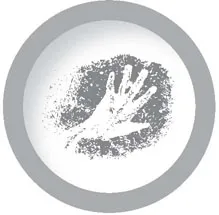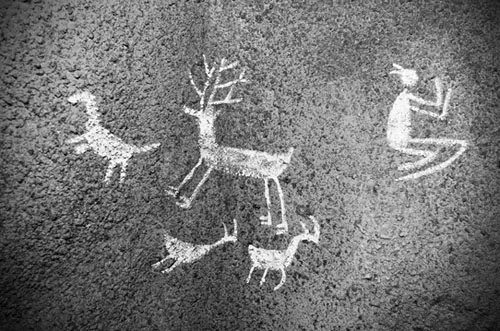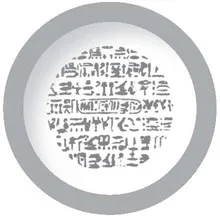
eBook - ePub
Symbols
A Universal Language
Joseph Piercy
This is a test
- English
- ePUB (disponibile sull'app)
- Disponibile su iOS e Android
eBook - ePub
Symbols
A Universal Language
Joseph Piercy
Dettagli del libro
Anteprima del libro
Indice dei contenuti
Citazioni
Informazioni sul libro
Symbols: A Universal Language looks at the story behind the world's most famous symbols, from the peace sign to the smiley. It shows just how much importance has been attached to the smallest and simplest of ideas and features over 40 of the most significant symbols from religion, politics and popular culture down the centuries. Did you know that 15% of all tweets on twitter contain the hash tag symbol? That's over 41 million uses of # each day. Or that the 'smiley face' originated in Massachusetts in the 1960s? This fascinating book highlights the roles symbols have played throughout history and how they have shaped our understanding of the world.
Domande frequenti
Come faccio ad annullare l'abbonamento?
È semplicissimo: basta accedere alla sezione Account nelle Impostazioni e cliccare su "Annulla abbonamento". Dopo la cancellazione, l'abbonamento rimarrà attivo per il periodo rimanente già pagato. Per maggiori informazioni, clicca qui
È possibile scaricare libri? Se sì, come?
Al momento è possibile scaricare tramite l'app tutti i nostri libri ePub mobile-friendly. Anche la maggior parte dei nostri PDF è scaricabile e stiamo lavorando per rendere disponibile quanto prima il download di tutti gli altri file. Per maggiori informazioni, clicca qui
Che differenza c'è tra i piani?
Entrambi i piani ti danno accesso illimitato alla libreria e a tutte le funzionalità di Perlego. Le uniche differenze sono il prezzo e il periodo di abbonamento: con il piano annuale risparmierai circa il 30% rispetto a 12 rate con quello mensile.
Cos'è Perlego?
Perlego è un servizio di abbonamento a testi accademici, che ti permette di accedere a un'intera libreria online a un prezzo inferiore rispetto a quello che pagheresti per acquistare un singolo libro al mese. Con oltre 1 milione di testi suddivisi in più di 1.000 categorie, troverai sicuramente ciò che fa per te! Per maggiori informazioni, clicca qui.
Perlego supporta la sintesi vocale?
Cerca l'icona Sintesi vocale nel prossimo libro che leggerai per verificare se è possibile riprodurre l'audio. Questo strumento permette di leggere il testo a voce alta, evidenziandolo man mano che la lettura procede. Puoi aumentare o diminuire la velocità della sintesi vocale, oppure sospendere la riproduzione. Per maggiori informazioni, clicca qui.
Symbols è disponibile online in formato PDF/ePub?
Sì, puoi accedere a Symbols di Joseph Piercy in formato PDF e/o ePub, così come ad altri libri molto apprezzati nelle sezioni relative a Ciencias sociales e Cultura popular. Scopri oltre 1 milione di libri disponibili nel nostro catalogo.
Informazioni
Argomento
Ciencias socialesCategoria
Cultura popularPART ONE
EARLY SIGNS
AND SYMBOLS
AND SYMBOLS
‘In the rough, a symbol is a sign that stands for something and something must exist for the symbol to symbolise.’
Alfred Korzybski
Since the earliest known civilizations, humankind has created signs and symbols. But although we have clear evidence of primitive man’s attempts to represent his world through cave paintings and rock art inscriptions, we do not know for certain the motivation behind these creations. Nonetheless, they remain important as a starting point for any examination of the use of signs and symbol systems. Similarly Egyptian hieroglyphics, though in essence a form of alphabet, rely on the use of pictograms to convey semantic meaning and communicate ideas, all of which places them firmly in the realm of the symbolic. Medieval heraldry is also an ideographic system and interesting for its primary purpose as a means of constructing symbolic identities by transposing human characteristics on to animals.

Palaeolithic Cave Art
The oldest surviving evidence of the human capacity to reflect or attempt to record the nature of life and consciousness, and to communicate through visual and symbolic imagery, can be found in Palaeolithic cave art.
In December 1994, three French speleologists (cave explorers) led by Jean-Marie Chauvet were studying geological aspects of the Ardèche valley in southern France when they happened upon a series of interlocking chambers previously hidden by rock falls. The floor of the chambers contained animal bones, prints, fossilized remains and clear evidence of human occupation. As they ventured further into the complex, Chauvet and his colleagues discovered hundreds of well-preserved paintings and engravings on the walls of two vast chambers linked by a short passageway. The first chamber contained images painted mostly in red dyes, whereas the majority of the images in the second chamber were predominantly marked in black charcoal and ochre.

Prehistoric cave paintings were not merely decorative; they also communicated to other hunter-gatherers where dangers or sources of food might be found
The Chauvet Cave paintings are chiefly depictions of animals, with thirteen different species represented in various forms and combinations, including woolly rhinoceroses, cave bears, lions, mammoths, wolves, horses and a large black cat thought to be a panther. For Chauvet, an enthusiastic amateur treasure hunter, the discovery was the culmination of several decades of exploring the caves of the Ardèche region. Realizing the significance of the find, he enlisted the help of archaeologist Jean Clottes, the leading French authority on prehistoric art.
By using modern radiocarbon dating methods, Clottes estimated that the paintings Chauvet and his team had discovered were at least 30,000 to 32,000 years old, making them, at that time, the oldest prehistoric artworks ever uncovered. Of particular interest to Clottes, however, was the level of sophistication in the images and their arrangements and the range of different animals depicted. Up until the discoveries by Chauvet and his team, the abiding theories as to the purpose and function of prehistoric cave paintings had centred on the notion that they were crude, decorative representations of primitive hunter-gatherer experiences; the animals depicted were those over which prehistoric groups traditionally had mastery, either for food or as beasts of burden. But the Ardèche paintings depicted a wide range of animals, many of which, such as lions, rhinos and cave bears, would not have been hunted as prey but rather would have been feared and revered by early humans.
The insides of the cave contained the skeletons of over forty cave bears (a species thought to have become extinct 12,000 years ago) as well as numerous paw prints, scratches and hollows, which suggested to Clottes that the bears had used the caves for hibernation. A particularly fascinating feature in one of the main chambers was evidence of a hearth and a mound of earth on which the skull of one of the bears appeared to have been symbolically placed, as if to create an altar. Clottes came to the conclusion that the two sets of red and black paintings belonged to two distinct periods during which the cave was inhabited by humans, with the majority of the artwork probably created during the Aurignacian culture of broadly 40,000 to 30,000 BC. Subsequent markings, such as scorch marks from torches, additional charcoal embellishments and the perfectly preserved footprint of a young child appeared to date from the later Gravettian period (30,000 to 22,000 BC). It was therefore possible that the original inhabitants (and artists) had abandoned the cave, only for it to be rediscovered by a different tribe some 5,000 years later. This second group of inhabitants, perhaps awed by what they discovered, may have viewed the site as sacred and religious.
Alongside the depiction of various animals were numerous red dots and handprints, the latter made by blowing the pigment around a hand pressed to the wall – a sort of stencil – or by painting the palm with the dye to form a press, very much in the manner of children’s nursery-school paintings today. There were no representations of complete human forms, but Clottes singled out the disembodied legs and bison heads as of particular significance. Could it be that the cave was used for quasi-religious rituals and ceremonies, with the minotaur-like figure representing a prehistoric shaman? In an interview in the Los Angeles Times in 1995, he outlined his theory as to the social context in which the Chauvet Cave paintings were produced:
[The] artists came to this cave and found the bear skeletons … Perhaps they were impressed by the skeletons and considered the cave to be full of the bears’ spirit, a powerful cave. They may have thought that, by painting some bears and other dangerous animals, they were capturing the animals’ spirits, adding power in their own lives.
Following the discovery of the caves, Clottes teamed up with David Lewis-Williams, a renowned South African anthropologist in the study of ancient rock art and a noted champion of the unfashionable view that cave paintings held symbolic value and were not simply arbitrary reflections of everyday experience. The two academics studied the arrangement and style of the different images at Chauvet and other prehistoric rock-art sites in relation to neuropsychological phenomena such as shamanic trance states, and in 1998 published their theories in The Shamans of Prehistory: Trance and Magic in the Painted Caves. The book drew comparisons between the practice of shamanism common in many primitive cultures across the world and the theoretical proposition that the caves were used as places of sacred ritual, with the paintings representing powerful symbols key to ceremonial worship. It initially received a mixed reception from the academic community – critics were concerned by the unconventional nature of the theoretical models employed and the use of comparison and conjecture in place of raw evidence – but less sceptical readers, whilst acknowledging the flaws in Clottes and Lewis-Williams’ studies, found the central tenet of their argument compelling in its opening up of new areas for intellectual enquiry and debate.
What is without doubt is that the discovery of the Chauvet Cave paintings and the work of Clottes and Lewis-Williams represented a watershed moment in our understanding of prehistoric art, and of early human endeavours to invest meaning in signs and symbols.
The ‘Secret’ Cave Under the Sea
Prior to the discovery of the Chauvet Cave paintings, the title of Europe’s oldest works of art belonged briefly to the Cosquer Cave at the Calanque de Morgiou near Marseille on the French Mediterranean coast.
In September 1985, a professional diving instructor named Henri Cosquer was exploring an underwater cave complex when he found an entrance leading into a long narrow passageway. Cosquer made subsequent explorations of the passageway, venturing a little further into the dark tunnel each time, until eventually he came to a large open chamber. To Cosquer’s amazement, the chamber was above sea level and was filled with stunning stalactite formations and aragonite crystals. Cosquer, for reasons that have never been fully explained, decided to keep his discovery to himself, later claiming in a television documentary that he felt it was his ‘own secret garden’.
Cosquer’s cave did not remain his private domain for long, however. The Calanque de Morgiou is a popular area for cave divers and in 1991 a team of four amateur divers got lost exploring the same caves. Cosquer was called in to help with the rescue mission, but only one of the divers survived. Realizing the perilous nature of his secret garden might lead to future fatalities, Cosquer revisited the cave with a team of five experienced divers. It was during this second ‘unoffical’ expedition that he noticed the array of handprints and animal images preserved on the walls and ceiling of the main chamber. Cosquer and his team photographed the interior of the cave and shot video footage as evidence, but their miraculous discovery was at first met with scepticism by scientists, many of whom suspected an elaborate hoax. Experts were particularly perplexed by several images of sea creatures; aside from occasional pictures of fish-like shapes, sea animals had not previously been common in Palaeolithic paintings – not to mention the octopus, penguins and seals that were unique to Cosquer’s cave.
The French Ministry of Culture sanctioned further explorations of the cave in 1992 under the joint directorship of Jean Courtin, an expert in cave exploration, the noted prehistorian Jean Clottes, and Cosquer, along with a team of skilled divers. Using radiocarbon dating from samples taken from the cave, the team were able to prove that the paintings were genuine, with some of the handprints dating back at least 27,000 years.
In the intervening years, mindful of the damage done at the caves in Lascaux, France, where the introduction of fresh air and the breath of thousands of visitors caused irreparable damage to the cave paintings, the French government has carefully monitored exposure to the Cosquer Cave, granting only a handful of specialists limited access for research purposes. The major threat to the preservation of the cave images, however, is not from overexposure but from the steadily rising sea level. Just as the caves were first submerged during the thaw at the end of the first ice age, so the acceleration in global warming will eventually wash the paintings away. Perhaps this is why Henri Cosquer felt compelled to keep his discovery a secret.

The Rosetta Stone
Napoleon Bonaparte was a titanic figure in European history, revered as a brilliant military strategist, charismatic general and legal and social reformer. Rather less commonly known is the influence, albeit indirectly, he had on the study of hieroglyphics, the system of signs and symbols used in Ancient Egypt.
In 1798, Napoleon was detailed to undertake an expedition to Egypt. The principal aim of the mission was to establish a significant military foothold in the Middle East, in an attempt to undermine growing British influence in the area. Alongside the invasion forces, Napoleon also assembled teams of experts in various fields such as civil engineering, cartography, history, art and botany, with a view to providing a detailed survey of the landscape, history and culture of Egypt. It is unclear how his interest in Ancient Egypt developed – some scholars have suggested that Napoleon, a man with a notoriously inflated sense of his own power and importance, may have been attracted to the deification of the great rulers of Egypt’s distant past and the pomp and grandeur of their temples and tombs – but whatever the reason for his fascination, the teams of experts he assembled made important discoveries that proved invaluable in the field of Egyptology. The surveyors produced the first detailed maps of the tombs in the Valley of the Kings, uncovering several new sites that had hitherto been hidden, and recovered and catalogued over 5,000 ancient treasures and artefacts.
Arguably the most important discovery was that made by accident by a young civil engineer named Pierre Bouchard. Bouchard had been put in charge of rebuilding an old Turkish fortress in the town of Rashid (Rosetta), close to Alexandria. Napoleon wished to establish a strategic military base at the mouth of the Nile Delta – the meeting point of the Nile and the Mediterranean Sea – and he saw Rashid as the perfect location. On 15 July 1799, whilst excavating the foundations of the fort, Bouchard came across a large granite slab covered in carved inscriptions. A highly educated man, he noticed that the inscriptions appeared to be written in three separate forms; intuitively surmising the potential importance of his dis...
Indice dei contenuti
- Cover
- Title Page
- Copyright
- Dedication
- By the Same Author
- Contents
- Introduction
- Part One: Early Signs and Symbols
- Part Two: Symbols of Ideology, Identity and Belonging
- Part Three: Symbols of Value, Ownership and Exchange
- Part Four: Symbols of Protection, Direction and Survival
- Part Five: Symbols of the Present and the Future
- Select Bibliography
- Picture Acknowledgements
- Acknowledgements
- Index
Stili delle citazioni per Symbols
APA 6 Citation
Piercy, J. (2013). Symbols ([edition unavailable]). Michael O’Mara. Retrieved from https://www.perlego.com/book/3188566/symbols-a-universal-language-pdf (Original work published 2013)
Chicago Citation
Piercy, Joseph. (2013) 2013. Symbols. [Edition unavailable]. Michael O’Mara. https://www.perlego.com/book/3188566/symbols-a-universal-language-pdf.
Harvard Citation
Piercy, J. (2013) Symbols. [edition unavailable]. Michael O’Mara. Available at: https://www.perlego.com/book/3188566/symbols-a-universal-language-pdf (Accessed: 15 October 2022).
MLA 7 Citation
Piercy, Joseph. Symbols. [edition unavailable]. Michael O’Mara, 2013. Web. 15 Oct. 2022.